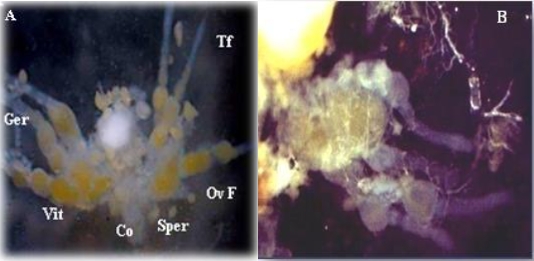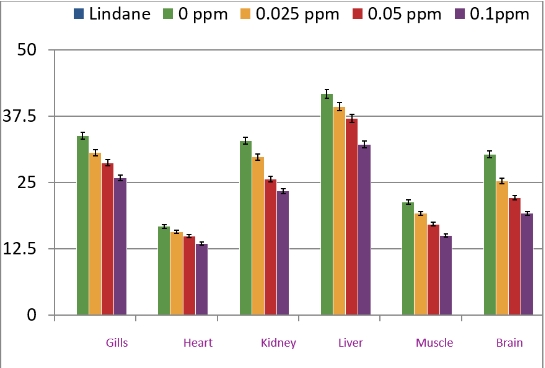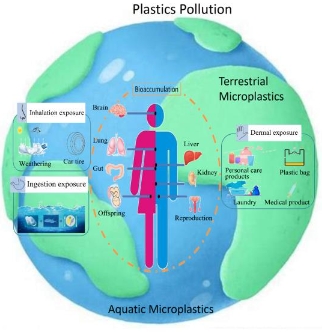Exposome analysis in toxicology: A comprehensive review
Abstract
Toxicology has extensively evolved with the study of how external agents impact living organisms. This manuscript examines the exposome, a paradigm representing all environmental exposures a human encounters from conception onward, introducing a holistic approach to understanding these effects on health. First coined by Dr. Christopher Wild in 2005, recent interpretations by Miller and Jones emphasize not only the environmental factors but also behavioral influences, internal biochemical processes, and the implications of the human microbiome. These augmentations underscore the body’s dynamic responses and continuous adjustments to external challenges. Traditional toxicology, which primarily focused on singular compounds, often overlooked intricate interplays between multifaceted exposures; the exposome aims to bridge this gap. To analyze the vast spectrum of lifetime exposures, various state-of-the-art techniques are in use, such as untargeted high-resolution mass spectrometry, biobanking, biomonitoring, and diverse omics approaches (metabolomics, adductomics, proteomics, and transcriptomics). These methods empower scientists to uncover unknown environmental risks, offering insights into the complex nexus between external exposures and health outcomes.
References
[1]Wild CP. Complementing the genome with an “exposome”: The outstanding challenge of environmental exposure measurement in molecular epidemiology. Cancer Epidemiology, Biomarkers & Prevention 2005; 14(8): 1847–1850. doi: 10.1158/1055-9965.EPI-05-0456
[2]Miller GW, Jones DP. The nature of nurture: Refining the definition of the exposome. Toxicological Sciences 2014; 137(1): 1–2. doi: 10.1093/toxsci/kft251
[3]Rappaport SM, Smith MT. Environment and disease risks. Science 2010; 330(6003): 460–461. doi: 10.1126/science.1192603
[4]Vlaanderen J, Moore LE, Smith MT, et al. Application of OMICS technologies in occupational and environmental health research; current status and projections. Occupational & Environmental Medicine 2010; 67(2): 136–143. doi: 10.1136/oem.2008.042788
[5]Calafat AM. The U.S. National Health and Nutrition Examination Survey and human exposure to environmental chemicals. International Journal of Hygiene and Environmental Health 2012; 215(2): 99–101. doi: 10.1016/j.ijheh.2011.08.014
[6]Dennis KK, Auerbach SS, Balshaw DM, et al. The importance of the biological impact of exposure to the concept of the exposome. Environmental Health Perspectives 2016; 124(10): 1504–1510. doi: 10.1289/EHP140
[7]Snyder EG, Watkins TH, Solomon PA, et al. The changing paradigm of air pollution monitoring. Environmental Science & Technology 2013; 47(20): 11369–11377. doi: 10.1021/es4022602
[8]Nieuwenhuijsen MJ, Donaire-Gonzalez D, Foraster M, et al. Using personal sensors to assess the exposome and acute health effects. International Journal of Environmental Research and Public Health 2014; 11(8): 7805–7819. doi: 10.3390/ijerph110807805
[9]Wieringa FP, Broers NJH, Kooman JP, et al. Wearable sensors: Can they benefit patients with chronic kidney disease? Expert Review of Medical Devices 2017; 14(7): 505–519. doi: 10.1080/17434440.2017.1342533
[10]Patel CJ, Ioannidis JPA. Studying the elusive environment in large scale. Journal of the American Medical Association 2014; 311(21): 2173. doi: 10.1001/jama.2014.4129
[11]Gudi-Mindermann H, White M, Roczen J, et al. Integrating the social environment with an equity perspective into the exposome paradigm: A new conceptual framework of the Social Exposome. Environmental Research 2023; 233: 116485. doi: 10.1016/j.envres.2023.116485
[12]Vineis P, Chadeau-Hyam M, Gmuender H, et al. The exposome in practice: Design of the EXPOsOMICS project. International Journal of Hygiene and Environmental Health 2017; 220(2): 142–151. doi: 10.1016/j.ijheh.2016.08.001
[13]Nieuwenhuijsen MJ, Kruize H, Gidlow C, et al. Positive health effects of the natural outdoor environment in typical populations in different regions in Europe (PHENOTYPE): A study programme protocol. British Medical Journal 2014; 4(4): e004951. doi: 10.1136/bmjopen-2014-004951
[14]Dennis KK, Marder E, Balshaw DM, et al. Biomonitoring in the era of the exposome. Environmental Health Perspectives 2017; 125(4): 502–510. doi: 10.1289/EHP474
[15]Schymanski EL, Singer HP, Longrée P, et al. Strategies to characterize polar organic contamination in wastewater: Exploring the capability of high resolution mass spectrometry. Environmental Science & Technology 2014; 48(3): 1811–1818. doi: 10.1021/es4044374
[16]Vineis P, Husgafvel-Pursiainen K. Air pollution and cancer: Biomarker studies in human populations. Carcinogenesis 2005; 26(11): 1846–1855. doi: 10.1093/carcin/bgi216
[17]Escher BI, Hackermüller J, Polte T, et al. From the exposome to mechanistic understanding of chemical-induced adverse effects. Environment International 2017; 99: 97–106. doi: 10.1016/j.envint.2016.11.029
[18]Dennis KK, Auerbach SS, Balshaw DM, et al. The importance of the biological impact of exposure to the concept of the exposome. Environmental Health Perspectives 2016; 124(10): 1504–1510. doi: 10.1289/EHP140
[19]Go YM, Walker DI, Liang Y, et al. Reference standardization for mass spectrometry and high-resolution metabolomics applications to exposome research. Toxicological Sciences 2015; 148(2): 531–543. doi: 10.1093/toxsci/kfv198
[20]Vrijheid M, Slama R, Robinson O, et al. The human early-life exposome (HELIX): Project rationale and design. Environmental Health Perspectives 2014; 122(6): 535–544. doi: 10.1289/ehp.1307204
[21]Patel CJ, Ioannidis JPA. Placing epidemiological results in the context of multiplicity and typical correlations of exposures. Journal of Epidemiology & Community Health 2014; 68(11): 1096–1100. doi: 10.1136/jech-2014-204195
[22]Tanner CM, Kamel F, Ross GW, et al. Rotenone, paraquat, and Parkinson’s disease. Environmental Health Perspectives 2011; 119(6): 866–872. doi: 10.1289/ehp.1002839
[23]Shonkoff SB, Morello-Frosch R, Pastor M, Sadd J. The climate gap: Environmental health and equity implications of climate change and mitigation policies in California—A review of the literature. Climatic Change 2011; 109(S1): 485–503. doi: 10.1007/s10584-011-0310-7
[24]Turner MC, Nieuwenhuijsen M, Anderson K, et al. Assessing the exposome with external measures: Commentary on the state of the science and research recommendations. Annual Review of Public Health 2017; 38(1): 215–239. doi: 10.1146/annurev-publhealth-082516-012802
[25]Lynch J, Smith GD. A life course approach to chronic disease epidemiology. Annual Review of Public Health 2005; 26(1): 1–35. doi: 10.1146/annurev.publhealth.26.021304.144505
[26]Morello-Frosch R, Shenassa ED. The environmental “riskscape” and social inequality: Implications for explaining maternal and child health disparities. Environmental Health Perspectives 2006; 114(8): 1150–1153. doi: 10.1289/ehp.8930
Copyright (c) 2023 Utsav Anand Mani, Husain Abbas, Mukesh Kumar, Haider Abbasz, Sharique Alam, Devansh Goyal

This work is licensed under a Creative Commons Attribution 4.0 International License.








